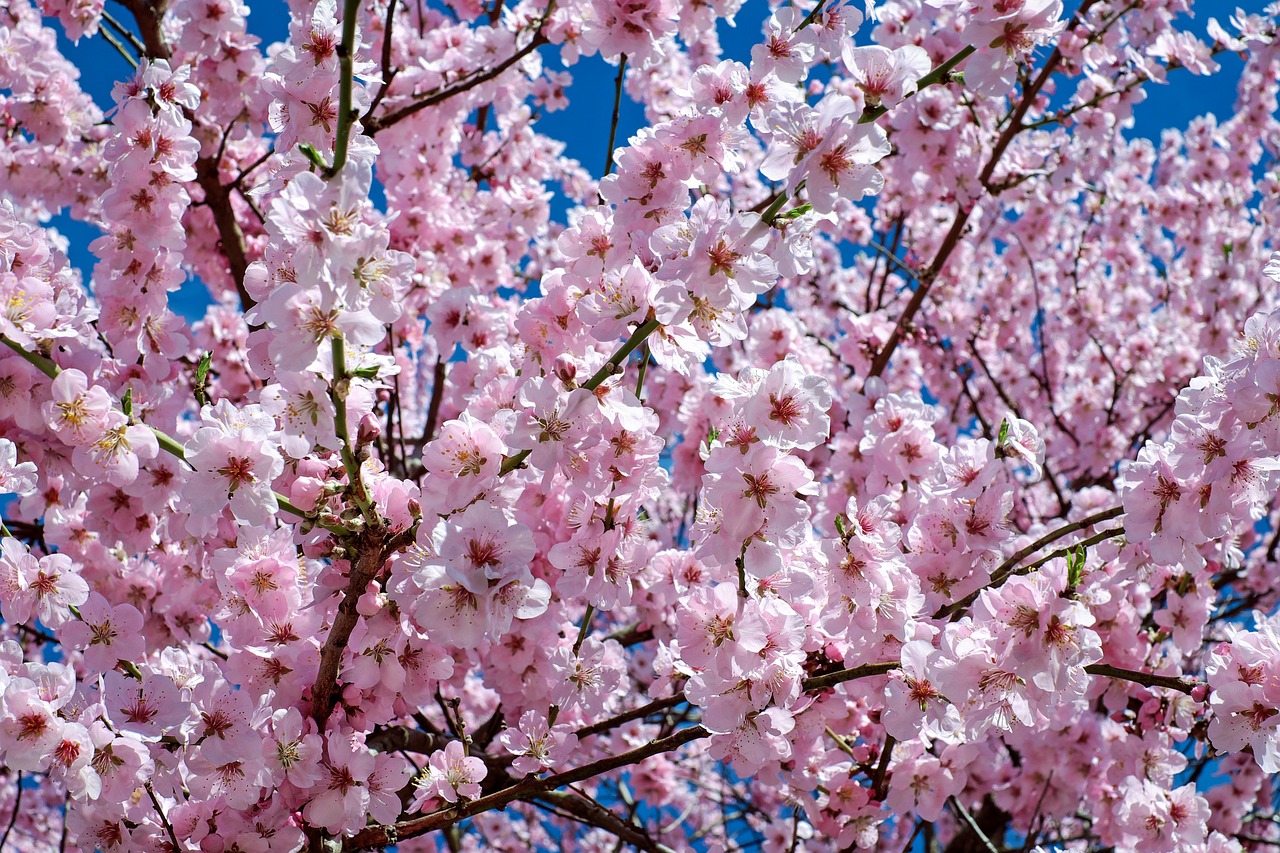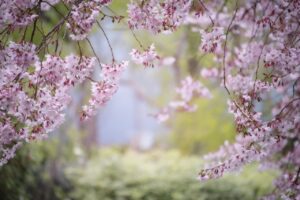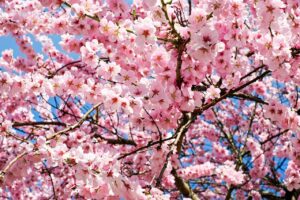Cherry Blossom
Overview
The Cherry Blossom, or Prunus serrulata, is a stunning deciduous tree cherished for its vibrant pink and white spring blooms around the world1 3. This ornamental delight thrives in full sun, well-drained soil, and is a symbol of life’s fleeting beauty—especially celebrated during Japanese Sakura festivals4 5.

Characteristics
Known for its stunning pink and white spring blooms, cultural significance, and ornamental value in gardens.
Region
Typically found in temperate regions of the Northern Hemisphere, especially in East Asia, and widely cultivated in temperate zones worldwide.
Natural Habitat
Typically found in temperate forest regions and mountain areas.
Cultivation
Requires full sun to partial shade, moderate watering, and well-drained loamy soil with a pH of 6.0 to 7.5.
Uses and Benefits
The ethereal beauty of Cherry Blossom Trees (Prunus serrulata) is more than just a visual delight. Beyond their ornamental charm, these blossoms hold deep cultural significance and offer a range of culinary and medicinal uses.
In Japanese culture, the fleeting nature of cherry blossoms symbolizes the transient essence of life. This philosophy is celebrated through vibrant festivals that honor the blossoms’ brief but stunning appearance. The flowers serve as a poignant reminder to cherish the present moment and appreciate the ephemeral beauty that life offers.
Cherry blossoms have also found their way into various culinary creations, adding a delicate flavor and visual appeal to dishes. Some popular applications include:
- Infusing tea with cherry blossom petals for a subtle, floral aroma
- Incorporating the blossoms into traditional Japanese sweets, such as sakura mochi
- Using pickled cherry blossoms as a garnish or flavoring agent in savory dishes
In addition to their culinary uses, cherry blossoms have been employed in traditional medicine practices. The flowers and leaves are believed to possess potential health benefits, such as:
- Anti-inflammatory properties that may help alleviate skin irritations1
- Antioxidant effects that could support overall well-being
- Potential mood-enhancing and stress-reducing qualities
The Cherry Blossom Tree’s ability to thrive in well-drained, loamy soils and its affinity for abundant sunlight allows it to grace gardens and landscapes with its enchanting presence. By capturing the hearts of people across cultures, these blossoms serve as a powerful symbol of life’s fleeting beauty and the importance of savoring each precious moment.

Cultivation Tips
To cultivate a thriving Cherry Blossom Tree, pick a spot that basks in full sun or enjoys partial shade for the healthiest growth and optimal flowering1. The soil should offer good drainage and have a loamy texture. Aim for a pH balance slightly on the acidic side or just into the alkaline spectrum, between 6.0 and 7.5, for ideal growing conditions2.
As your Cherry Blossom Tree matures, it will need ample space to spread its branches. Ensure there’s room for the tree to grow, typically around 15–20 feet in diameter2. This allows the tree to develop a full, healthy canopy.
With the right location and soil, your Cherry Blossom Tree will thrive. Keep these key tips in mind:
- Choose a sunny or partially shaded spot
- Provide well-draining, loamy soil
- Maintain a pH balance between 6.0 and 7.5
- Allow 15–20 feet of space for mature tree growth
By carefully tending to its growing conditions, you’ll be rewarded with a spectacular, albeit fleeting, show of delicate blooms each spring. With the proper care, your Cherry Blossom Tree will burst into a cloud of soft pink or white petals, announcing the arrival of the new season.
Seasonal Considerations
For a spectacular spring display, plant your Cherry Blossom Tree in a spot that receives full sun to partial shade. Well-draining, loamy soil with a slightly acidic to neutral pH between 6.0 and 7.5 is ideal for healthy growth and abundant blooms1. As you select the perfect location, ensure the tree has plenty of room to spread its branches, allowing 15–20 feet of space for mature growth2.
To encourage a breathtaking floral display, consider these seasonal care tips:
- Spring: Apply a slow-release, balanced fertilizer to support the tree’s growth and flowering. Water deeply and regularly, especially during dry spells, to keep the soil consistently moist but not soggy.
- Summer: Prune the tree after flowering to remove dead, damaged, or crossing branches, promoting healthy growth and shape. Continue watering deeply and mulch around the base to retain moisture and suppress weeds.
- Fall: Reduce watering frequency as the tree prepares for dormancy. Remove fallen leaves to prevent disease and apply a layer of compost or well-rotted manure to enrich the soil.
- Winter: Protect the tree from severe cold and drying winds by applying a layer of mulch around the base. Avoid pruning during this time, as it may stimulate new growth that can be damaged by frost.
By providing the right growing conditions and seasonal care, your Cherry Blossom Tree will thrive, rewarding you with a spectacular display of delicate pink or white blooms each spring.

Issues and Troubleshooting
While Cherry Blossom trees are renowned for their splendid blossoms, growers might face some challenges. One of the common issues is the susceptibility to pests like aphids and spider mites, which can affect the health of the tree and mar the beauty of its flowers. Diseases such as powdery mildew and cherry leaf spot can also take a toll on the foliage and overall vigor of the tree.
To ensure your Cherry Blossom thrives, consider the following tips:
- Regularly monitor your tree for signs of pests or disease
- Water your tree properly, avoiding both over and under-watering
- Fertilize your tree as needed to maintain its health
- Use fungicides or insecticides promptly if you notice any issues
- Practice good hygiene around your tree to prevent the spread of problems
By staying vigilant and addressing concerns quickly, you can help keep your Cherry Blossom looking its best and enjoy its stunning blooms year after year.1 2
History and Folklore
The Cherry Blossom Tree, known as Sakura in Japan, is deeply entwined with the nation’s cultural heritage. Each spring, the arrival of the delicate pink and white blossoms is celebrated with festivals that draw millions of visitors from around the world. These celebrations are not merely a spectacle of natural beauty, but a profound reflection on the transient nature of life itself.
In Japanese tradition, the Cherry Blossom symbolizes the ephemeral quality of existence4. The blossoms, which burst forth in a brilliant display of color, last only a few short weeks before falling to the ground. This brief but stunning flowering has come to represent the fleeting nature of human life, reminding us to cherish each moment as it passes.
The Cherry Blossom’s significance extends beyond philosophical musings, however. For centuries, the tree has been a source of artistic inspiration, featured in countless poems, paintings, and works of art5. From the haiku of Matsuo Bashō to the woodblock prints of Hokusai, the Sakura has captured the imagination of Japan’s greatest creative minds.
Today, the Cherry Blossom remains an enduring symbol of Japan’s rich cultural heritage. The annual festivals that mark its arrival are a time for reflection, renewal, and celebration. As the delicate petals flutter to the ground, they serve as a poignant reminder that while life may be fleeting, it is also immeasurably beautiful.
References
1. Japanese Cherry Blossom (Prunus serrulata) – Gardenia, https://www.gardenia.net/genus/prunus-serrulata-japanese-flowering-cherry
2. How to Plant, Grow, and Care for Cherry Blossom Trees – Planet Natural, https://www.planetnatural.com/cherry-blossom-tree/
3. How To Grow And Care For Cherry Blossom Trees – Southern Living, https://www.southernliving.com/garden/trees/cherry-blossom-tree
4. All About Cherry Blossoms: Facts and Planting Tips – Brighter Blooms, https://www.brighterblooms.com/pages/all-about-cherry-blossom-trees
5. Japanese cherry – Prunus serrulata | Plants | Kew, https://www.kew.org/plants/japanese-cherry
Image Credit: Couleur
Image Credit: dewdrop157
Image Credit: Couleur
Nicolas Duval
Nicolas is a passionate advocate for nature and the art of wildcrafting. His dedication shines through in Wildcraftia, a website he meticulously crafted to serve as a haven for nature enthusiasts worldwide. Driven by a deep appreciation for nature’s connection to humanity, Nicolas embarked on his journey in 2011 with SmokableHerbs, a platform showcasing his love for nature’s bounty. Building upon this foundation, he established Smokably, a thriving online store offering premium herbs and blends to a global audience.
